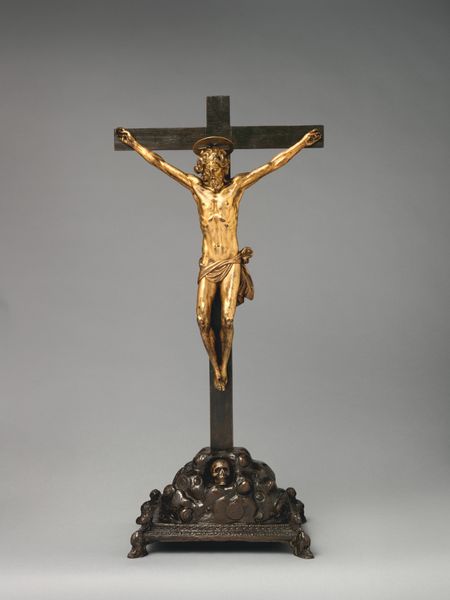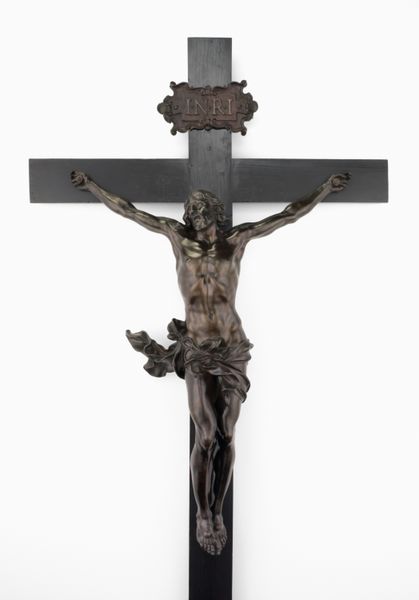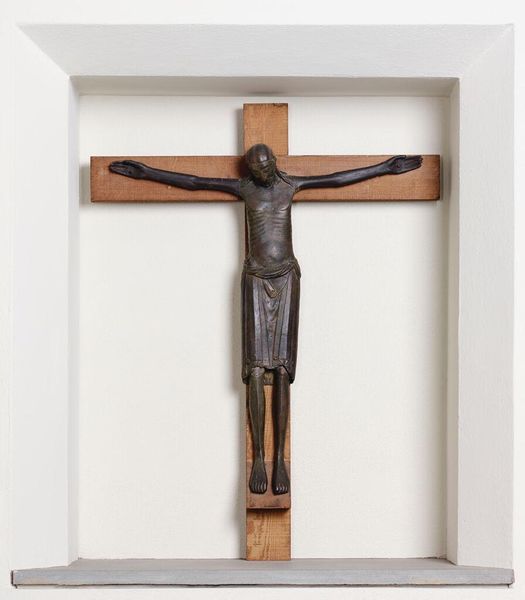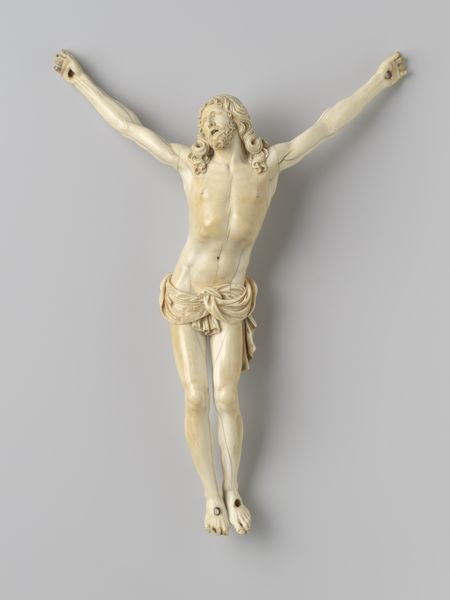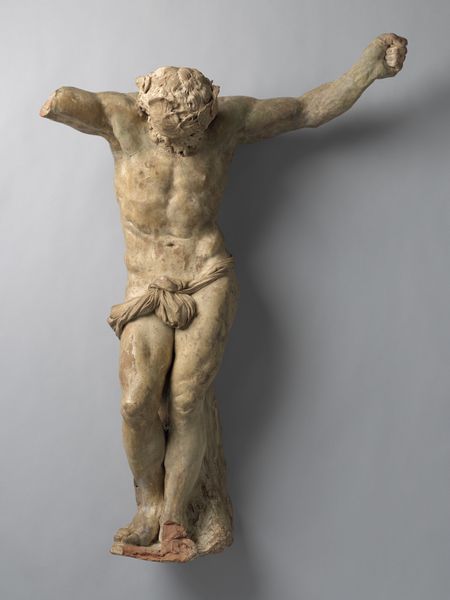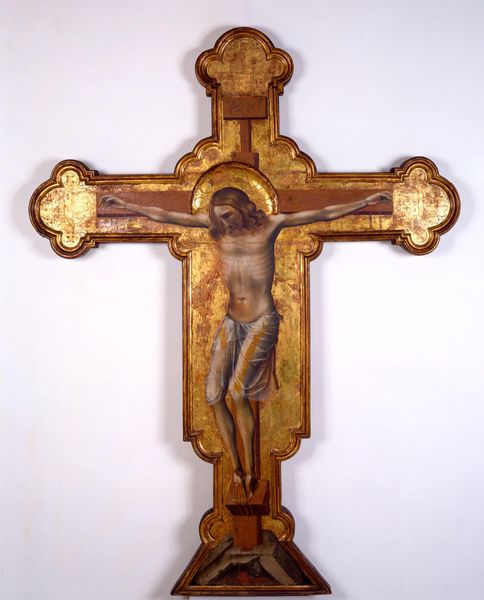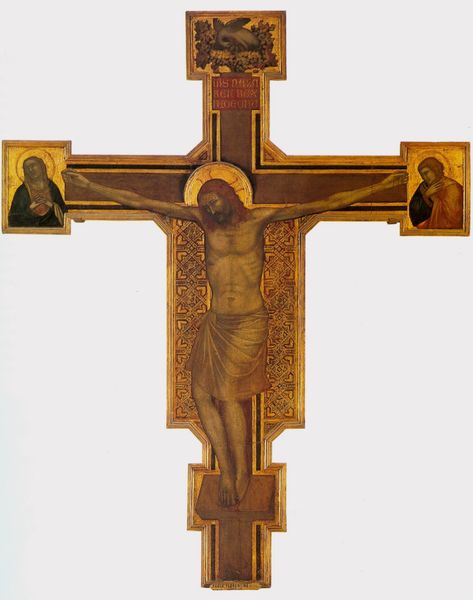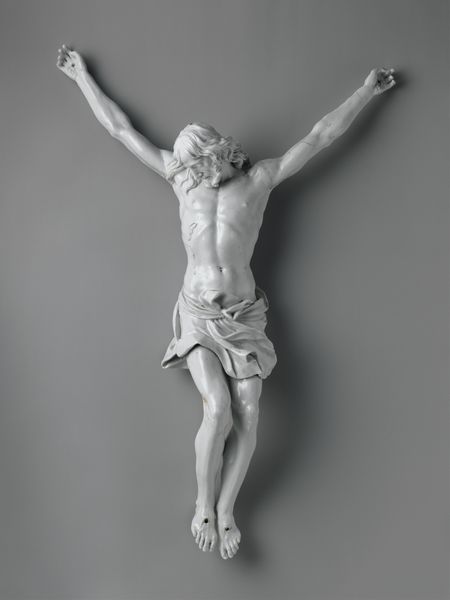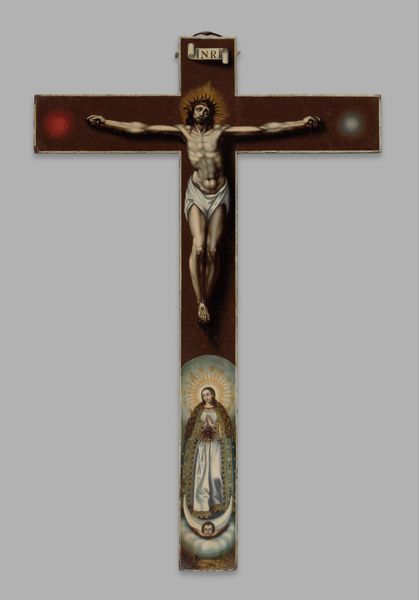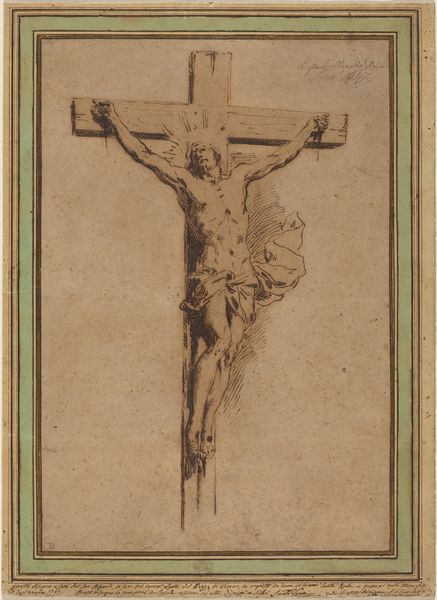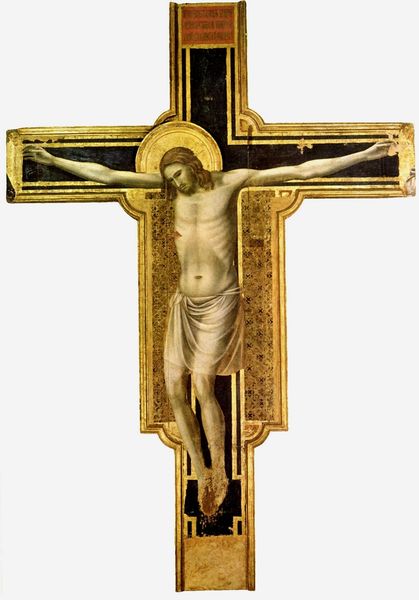
bronze, sculpture, wood
#
portrait
#
baroque
#
sculpture
#
bronze
#
figuration
#
sculpture
#
wood
#
history-painting
Dimensions: overall (corpus): 86.9 x 79 x 20.6 cm (34 3/16 x 31 1/8 x 8 1/8 in.) overall (cross): 167 x 90.1 cm (65 3/4 x 35 1/2 in.)
Copyright: National Gallery of Art: CC0 1.0
Curator: Here we see "The Pistoia Crucifix," a sculpture by Pietro Tacca, crafted between 1600 and 1616. The body of Christ is rendered in bronze and affixed to a wooden cross. Editor: The somber palette certainly catches the eye. The dark bronze against the wooden cross with delicate gold trim establishes a powerful dichotomy between the figure and the framework, the sacred and the decorative. Curator: Tacca masterfully captured the agony of the crucifixion, mirroring its symbolic importance across different cultures. Christ's emaciated frame speaks to sacrifice and suffering—themes prevalent across the collective human psyche. It evokes empathy, asking the viewer to remember. Editor: Agreed, the emotionality is undeniable. I see how Tacca used bronze to his advantage; its smooth texture captures light and shadow in ways that accentuate the anatomical precision. The slight torsion in the body enhances dynamism, making it incredibly compelling despite the subject matter. Curator: Bronze has an interesting history, prized by Romans, Greeks, and many cultures that came before—all associated it with power, prestige, and immortality. I'd say that it makes perfect sense that it was used for the effigy. By association, it underscores Christ’s own transition to an immortal state through sacrifice. Editor: That brings up an intriguing element. The Baroque loved to play with dualities; here, it’s not just about sacred and decorative or immortal and mortal. The wood represents nature, the earth—a humble, accessible material made precious with a golden trim. In turn, the bronze is alchemic, shaped and fired; it bridges the corporeal and the divine. Curator: I like how you describe that alchemy, from raw material to a state of grace, both physically, due to the transformation, and spiritually, because of the symbolism. It suggests a link to a lineage of ritual and artistic intention, reinforcing its cultural impact over time. Editor: Indeed. After a closer look, I appreciate the sculpture’s structural integrity; its components cohere, communicating a range of narratives, all without losing its potency. Curator: Its beauty, however harrowing, endures through Tacca's masterful translation of human pain into a timeless form. Editor: An impressive convergence of artistry and symbolism. One could spend hours dissecting every line, form, and tonal variation and come away enlightened.
Comments
No comments
Be the first to comment and join the conversation on the ultimate creative platform.
